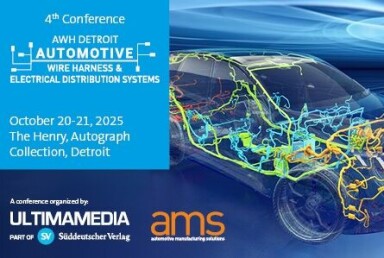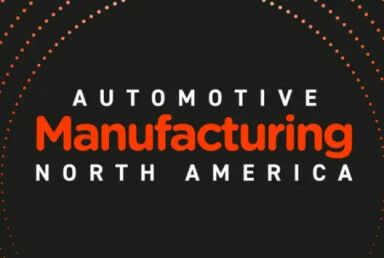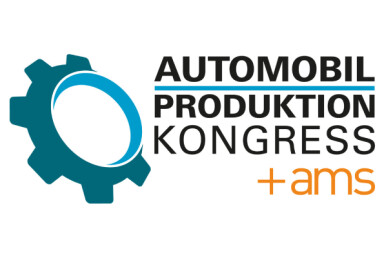A gauge of quality

Digital modelling and laser measurement are just some of the technologies being used to prove the latest vehicle systems and maintain quality, writes Mike Farish
Protean Electric’s product validation manager Mark McDonnell has a 90-strong team working to bring to the market an in-wheel electric drive system in which motor, inverter and mechanical brake system are all packaged inside the wheel assembly. Although the company does have test units running on the road, it is still heavily engaged in an iterative development cycle that sees that sees a new batch of prototypes being built and tested roughly every three months.
Recently Protean invested in a software-based testing system that is, says McDonnell, acting both to compress test cycle times and improve the quality and consistency of the information generated. The software involved is the LabVIEW system from National Instruments (NI), which is being used to support ‘characterisation’ testing of prototype units on the company’s dynamometers.
McDonnell explains that the prototypes have to be ‘driven’ through a test cycle on the dynamometers during which a range of different performance parameters need to be measured and recorded. These include electrical power in (current and voltage), mechanical power out and temperatures of internal components.
Altogether, says McDonnell, there are around 30 different data collection points involved. Previously a full test cycle carried out by a human operator might have taken as long as two weeks to complete. But then another week would be required simply to collate all the information involved into a format that could actually be used by the company’s design engineers as the basis for incorporating improvements into the next batch of prototypes.
This was clearly far too long and McDonnell, who was familiar with the LabVIEW software from his time at university, saw an opportunity to put it to practical effect in a professional environment. An initial investment of around £5,000, he reports, got a single system up and running on a Windows PC. But the results were so successful that the company has now invested what McDonnell will only say, with a degree of understatement, is “a bit more” in a total of six software licenses running on a dedicated hardware configuration from NI called PXI, though still in the Windows environment.
The whole system is now used every day, reports McDonnell, and is making a major impact on the company’s testing and quality reporting cycle. The most obvious difference is in the time involved. The sequence that used to take three weeks, he states, is now down to around 12-14 hours because everything – the testing itself and the collation of the resulting information – is completely automated. The actual raw amount of data involved is considerable. Readings are taken every 50 milliseconds, says McDonnell, with the result that some 30MB of data are captured and processed in every test cycle.
But, as McDonnell also confirms, speed is only part of the equation – the quality and consistency of the data is also much improved. For a start, he says, all test cycles are now identical through the obviation of all possibility for inconsistencies caused by variations in operator procedure. In turn, the complexity of the test cycle itself is no longer any sort of inhibiting factor – the system can be programmed to carry out all the “highly dynamic testing with constantly changing speed and torque” required by the relevant European standards. McDonnell says this has real implications for the “credibility of the product”, when his perception at least is that there is still “some prejudice against electric vehicles in the market”.
Moreover, actually programming a cycle is a relatively simple procedure, accomplished via the creation of an appropriate spreadsheet. A further capability that can also be programmed in is automatic shutdown in the event of any fault occurring during the test cycle, which means that the whole procedure can safely be left to run without the need even for passive supervision by any of the company’s test staff leaving them free for other tasks.
McDonnell’s answer to the question of whether the system has helped improve the whole product development process – not just its testing element – is unequivocal: “Absolutely”. Nothing is measured that was not measured previously, he states, rather the key factor is the ability to get all the test results back to the design and development team quickly, concisely and cogently, so that the next cycle of product improvement is based on information that is intrinsically reliable and accurate.
Elsewhere, one of the more widely-used quality monitoring technologies already used in mainstream automotive manufacturing is in-line gauging by means of laser triangulation. Put simply, a laser source projects focused laser light onto critical features on parts and assemblies within the field of view of a camera that captures the resulting reflection. This image is then processed and evaluated to detect deviations from design intent - for instance mis-positioned holes or attachment points.
The technique can involve stationary sensors used simultaneously for maximum speed or a single sensor carried to the defined measurement locations by a robot for increased flexibility. Moreover, measurements can be taken on a continuous basis in real time, permitting 100% checking of specified features without any interference in the production process.
That brief summary of the technique is provided by John Kearney, vice-president and managing director for the European operations of US-owned Perceptron. Kearney says the technique can achieve resolutions of 50 microns and, for the moment at least, is most commonly found in body shop environments. Perceptron’s own installation base includes Audi, BMW, Chrysler, Daimler, FIAT, Ford, General Motors, Jaguar Land-Rover, Porsche, PSA, Renault, SEAT, Toyota, Volvo and Volkswagen, among others.
Nevertheless, the announcement by the company, in early 2011, of an order from a German automotive manufacturer for some 20 systems to support the manufacture of a new “premium vehicle”, which has recently been launched on the market, provides an indication of the ways in which the application of the technique are developing.
One of those is its use for gap and flush measurement, which Kearney says has been increasing markedly in recent years. The other lies in both the number of separate systems involved and their location – not just the body shop but also the trim and final area. “We’ve got customers with as many as twenty-five gauging systems distributed across one production line in their plants,” he confirms.
The reason for their popularity is an evolution in the basic strategy underlying the application of the technology. As opposed to being solely used as a retrospective tool to detect faults at the end-points of particular process areas, it has become a more pervasive statistical process control (SPC) technique that can be used to monitor those processes in detail. As Kearney explains, applying the technology in this way does more than just detect faults, it pinpoints where they are occurring and helps to improve the manufacturing process – a particularly pertinent capability in an automotive plant, where processes such as welding can introduce deviations that may not have been present when a part was originally made.
The established hardware, software and communications elements – sensors, PC platforms and Ethernet networking – have been validated in a large variety of applications in the automotive industry for several decades. But this does not mean that the basic technique has remained static – far from it. Perceptron itself introduced a new embodiment of the technology a couple of years ago called Helix, which Kearney says is now being taken up by the automotive manufacturing sector. The key development represented by Helix, he explains, is that the orientation, quantity and density of the laser lines projected by the laser source can be controlled through a concept Perceptron describes as Intelligent Illumination.
The consequence is a significant increase in the applicability of the technology. Not only can a single installation check many more points within the available cycle time than previously because of its ability to scan over a wide area, it can also check large and complex features that previously were not susceptible to the technique.
Elsewhere on a smaller scale but with absolutely no diminution in the required standards an outfit that has upgraded its in-house quality control operations within the last few months is Formula One’s Caterham F1 team, based in Leafield, Oxfordshire, UK. Tim Nolan, head of inspection for the team – which with 280 employees is effectively the equivalent of a reasonably-sized SME company – confirms that just last November it took delivery of two manually manoeuvrable arms from inspection specialist Faro, with the option of their being fitted with either laser scanners or ‘hard’ contact probes.
Nolan says the arms will be used in two contexts. One will be to support wind tunnel tests by checking both the dimensions and the orientation of model parts being tested within the tunnel. The other, perhaps more fundamental, will be to allow the team to bring in-house both the manufacture and associated quality control of the ‘patterns’ machined from an epoxy material that are used as templates for making the moulds from which carbon fibre components for the team’s cars are produced, as well as checking the dimensional accuracy of the moulds themselves.
Previously, Nolan explains, the manufacture of the patterns was outsourced, but they will now be made at Leafield following the purchase of a five-axis machining centre that will be programmed with information derived from the team’s Catia CAD system. The parallel purchase of the Faro arms with their probes, scanners and associated software will, however, allow the team to ‘close the loop’ with the whole cycle of design, manufacture and checking of dimensional accuracy under its own control.
What had happened under the previous regime, Nolan continues, was that the team’s ability to carry out dimensional quality control was restricted by the limitations of its in-house coordinate measuring machines (CMMs), which could not be used with parts that exceeded limits of 1.2m in length and 1m in width. While this was practicable in most cases it meant that the team was totally reliant on its contractors for checking the accuracy of larger parts such as engine covers and vehicle floors. “We will have more confidence in parts that we can check for ourselves,” he states.
The new arms will not only bring these operations in-house, they will also provide the team a much enhanced degree of flexibility in the way that it can employ measurement techniques. Their physical portability, Nolan points out, means, for instance, that they could be used not just with major structural elements of the team’s cars but with the cars themselves. “We will be able to check components on the cars,” he confirms. He even envisages the possibility of their being used to scan the team’s drivers to enable the car seats to be made a more comfortable fit.
In actual use, the decision whether to employ probing or scanning will depend on various factors including operator preference and the geometry of the part. Nolan explains that particularly complex geometries might dictate the need to use contact probing simply to ensure that otherwise inaccessible points on the surface of the parts are checked. But parts with large, smooth surface areas will certainly be more amenable to scanning and Nolan expects the team will gain major benefits in terms of time-savings where these are involved. Procedures that might have taken an hour on a CMM should take no more than 15-30 minutes when an arm is used instead.
Interestingly, though, dimensional accuracy will not be a factor that determines the choice of probe or scanner – at least when the work involves the patterns or moulds. The accuracy achievable by the probes of +/-0.029mm and by scanning of +/-0.076mm is in both cases well within the tolerance of +/-0.1mm they require. But Nolan stresses that the advent of the Faro arms will not make the CMMs redundant – their much greater accuracy of 0.015-0.020mm will still make them essential for higher tolerance metrology work on machined components.


